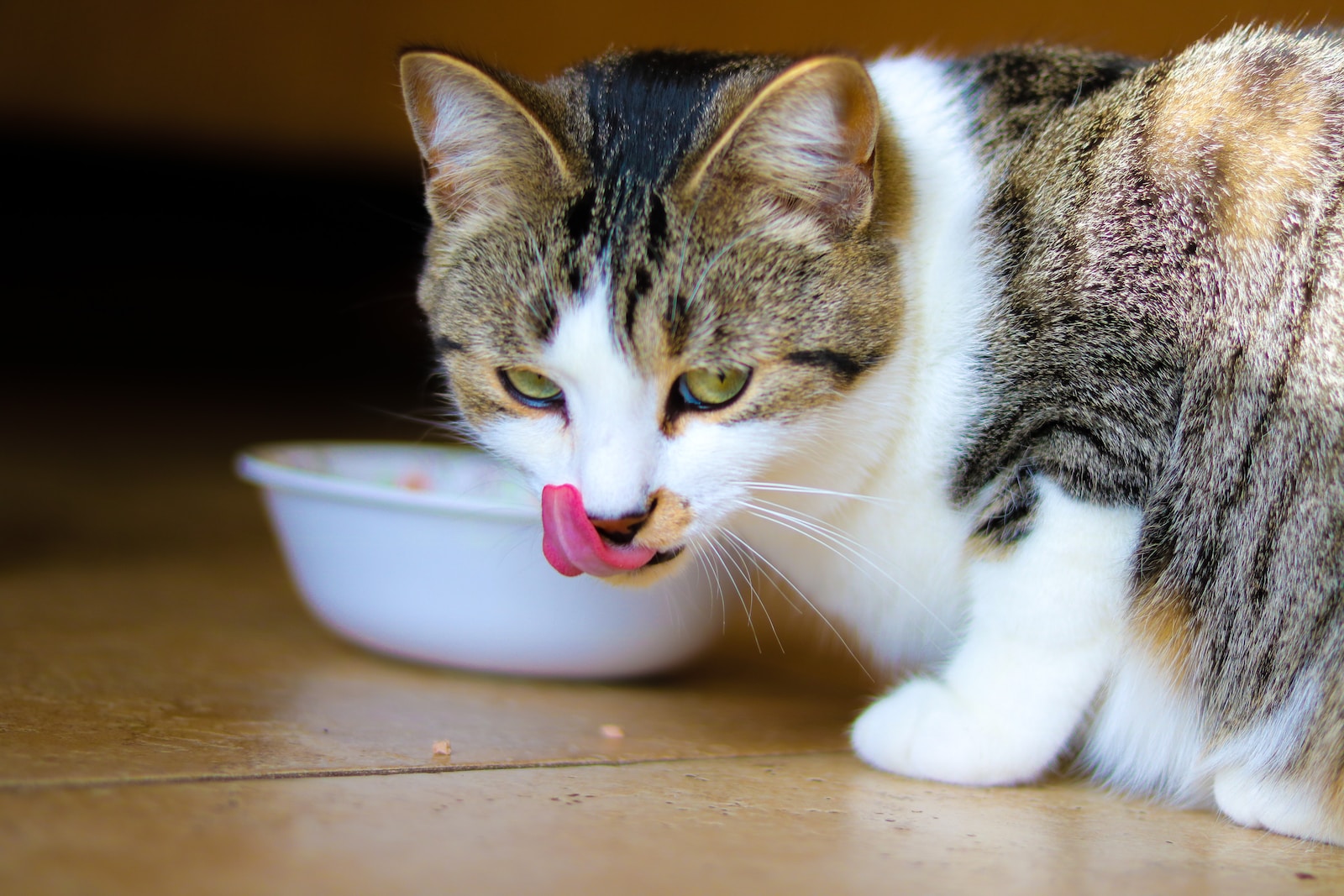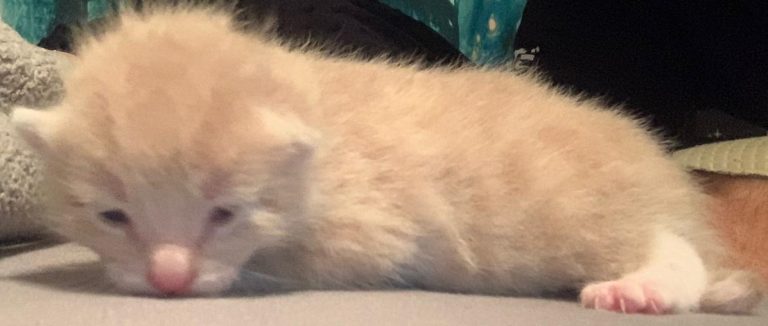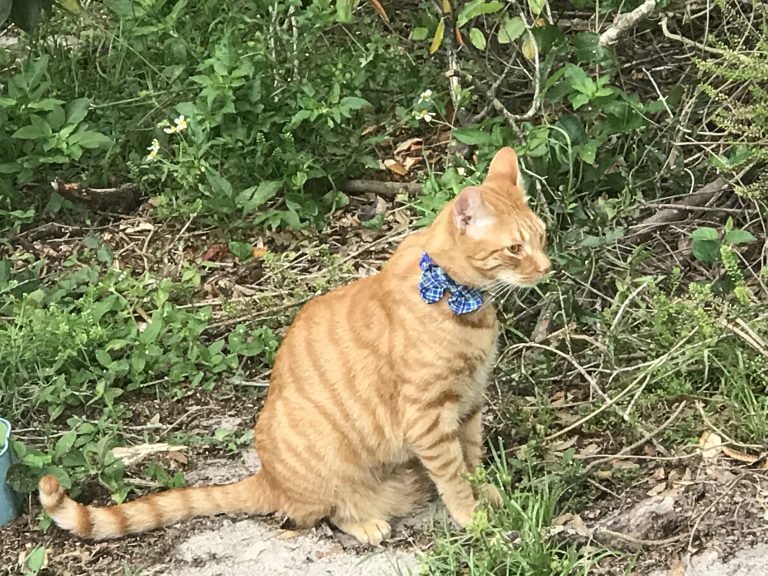A Paws for Thought: Top 10 Mistakes for New Cat Owners
Embarking on the journey of cat ownership is akin to entering a captivating realm filled with mystery, companionship, and occasional whisker-induced mischief. As the doors of your home swing open to welcome a new feline family member, you are stepping into a world where the subtle purr or gentle nudge of a cat can become the rhythmic heartbeat of your household. However, this enchanting endeavor is not without its challenges, and to ensure a harmonious coexistence, it is crucial for new cat owners to be equipped with knowledge and understanding. Welcoming a cat into your life requires more than just providing food and shelter; it demands a nuanced comprehension of their unique needs and behaviors. In this exploration of the top 10 mistakes often made by new cat owners, we will delve into the intricacies of feline care, backed by scientific insights and a commitment to fostering the health and happiness of your furry companion. So, fasten your seatbelts as we embark on a journey into the captivating universe of cat ownership, where every feline whisker holds the potential for a delightful adventure.
Inadequate Nutrition
Delving into the realm of feline care, the cornerstone of responsible cat ownership lies in the meticulous attention given to the dietary needs of our feline companions. At the heart of this responsibility is the provision of a meticulously balanced and nutrient-rich diet. Understanding the intricacies of a cat’s dietary requirements is paramount, given that they are obligate carnivores—a term that underscores their biological necessity for a diet predominantly composed of meat. The significance of this dietary preference is deeply rooted in the evolutionary history of cats. Unlike omnivores, cats have evolved as hunters, thriving on a diet primarily consisting of animal flesh. This evolutionary adaptation has shaped their nutritional needs, emphasizing the essential role of meat-based proteins, essential amino acids, and specific nutrients crucial for their overall well-being. When navigating the labyrinth of cat food options, it becomes imperative for cat owners to be discerning consumers. The chosen cat food should not only satiate the discerning palate of your feline friend but, more critically, meet their specific nutritional requirements. A well-rounded cat diet must encompass the vital amino acids, such as taurine and arachidonic acid, which are indispensable for maintaining optimal health and supporting various physiological functions. Taurine, for instance, is an amino acid that holds a pivotal role in feline cardiovascular health, retinal function, and the development of the central nervous system. Arachidonic acid, another essential component, plays a crucial role in maintaining the integrity of a cat’s skin and coat, while also contributing to the proper functioning of their reproductive and immune systems. In the pursuit of selecting the most appropriate cat food, owners must scrutinize labels, considering not just taste preferences but the nutritional content. Opting for cat food formulations that explicitly address the specific needs of obligate carnivores ensures that your feline companion receives a diet that aligns with their evolutionary biology, promoting not only satiety but also sustained health and vitality. In essence, providing a balanced and nutritious diet for your feline friend transcends mere sustenance—it becomes a testament to your commitment to their well-being and longevity. As conscientious cat owners, the dietary choices we make for our feline friends lay the foundation for a life rich in health, vigor, and the delightful companionship that comes with a content and well-nourished cat.
Ignoring Veterinary Care for your cat
In the intricate dance of feline care, the pivotal role of regular veterinary check-ups emerges as a linchpin for ensuring the enduring health and happiness of your beloved cat. These check-ups, far from being a mere formality, serve as a proactive and indispensable measure in safeguarding your feline friend against a myriad of potential health hazards. Among the key components of these veterinary rendezvous, vaccinations take center stage as the first line of defense against a spectrum of preventable diseases that can impact a cat’s well-being. These immunizations are not merely shields against infections; they are the armor that fortifies your cat’s immune system, shielding them from potentially life-threatening illnesses. Skipping these vaccinations is akin to lowering the barricades, exposing your feline companion to risks that could otherwise be mitigated with timely and appropriate preventive measures. In the often-neglected realm of feline health, dental care occupies a position of paramount importance. Neglecting your cat’s dental health can usher in a cascade of issues, ranging from unpleasant breath to more severe complications affecting vital organs. Regular veterinary check-ups include meticulous assessments of your cat’s oral health, allowing for the timely identification and management of dental concerns. By addressing dental issues promptly, you not only contribute to your cat’s comfort but also mitigate the risk of systemic health problems stemming from neglected oral hygiene. Equally critical is the imperative to heed the subtle whispers of your cat’s well-being, discernible in the nuanced signs of illness. Cats, being masters of disguise when it comes to discomfort, may exhibit subtle changes in behavior that can serve as early indicators of underlying health issues. Regular veterinary check-ups provide an invaluable opportunity for a trained professional to decipher these signals, enabling prompt intervention and treatment. Ignoring these signs, on the other hand, can allow potentially serious conditions to fester undetected, leading to a decline in your cat’s overall health. Building a strong, trust-based relationship with a veterinarian is akin to forging a partnership in the journey of feline care. A trusted veterinarian becomes not just a medical professional but a confidant, someone familiar with your cat’s unique medical history and individual needs. This relationship forms the bedrock upon which a comprehensive and tailored preventive healthcare plan is constructed. The crux of responsible cat ownership, therefore, lies in the proactive cultivation of this relationship and the adherence to a routine preventive healthcare plan. This plan acts as a compass, guiding you through the intricacies of your cat’s health needs, from vaccinations and dental care to the vigilant monitoring of their overall well-being. In embracing the rhythm of regular veterinary check-ups, you not only empower yourself as a caretaker but provide your feline companion with the gift of a life steeped in health, vitality, and the enduring warmth of a mutually cherished bond.
Inadequate Cat Litter Box Maintenance
In the delicate ballet of feline contentment, the role of a pristine litter box emerges as a cornerstone for ensuring the well-being and happiness of your discerning cat. Cats, renowned for their meticulous grooming habits and exacting standards, place a premium on the hygiene of their designated bathroom space. The repercussions of neglecting this fundamental aspect of their environment extend beyond mere cleanliness; they delve into the realm of your cat’s behavioral health. The cleanliness of the litter box is, in essence, a linchpin in preventing behavioral issues that may manifest as inappropriate elimination— a concern that not only disrupts the harmony of your home but also serves as a red flag for potential distress in your feline companion. Failure to maintain a hygienic litter box can trigger a domino effect, prompting your cat to seek alternative, less desirable locations for their bathroom activities. This can be a manifestation of their natural instinct to distance themselves from unsanitary conditions, and it underscores the significance of providing an environment conducive to their innate behaviors.
Scientific studies lend credence to the importance of this aspect of feline care, elucidating the intricate relationship between environmental cleanliness and the manifestation of natural feline behaviors. Cats, as creatures of habit and routine, thrive in environments that mirror their instinctual tendencies. A clean and suitable litter box not only serves as a practical necessity but also fosters a space where your cat can comfortably express their natural behaviors without stress or hesitation. Understanding the nuances of feline behavior reveals that, beyond a mere receptacle for waste, the litter box serves as a territory marker and a site for ritualistic behaviors. Neglecting the maintenance of this space not only jeopardizes their physical well-being but encroaches on the psychological realm, potentially leading to stress-induced behaviors that may further exacerbate inappropriate elimination tendencies. As conscientious cat owners, it is incumbent upon us to recognize the pivotal role that a clean litter box plays in fostering a harmonious living environment for our feline friends. Regular scooping, proper cleaning, and providing an appropriate litter substrate are integral components of this duty, ensuring not only the physical comfort of your cat but also contributing to their overall emotional satisfaction. In embracing these practices, you create a sanctuary for your cat, a space where their natural instincts can flourish, and their well-being can thrive in the lap of cleanliness and domestic tranquility.
Lack of Environmental Enrichment
In the captivating tapestry of feline existence, the intelligence and curiosity inherent in cats stand as defining attributes that demand conscious nurturing. The well-being of our feline companions hinges not only on their physical health but equally on the provision of mental and physical stimulation. Neglecting the imperative of environmental enrichment not only undermines their innate qualities but can also precipitate a cascade of negative consequences, spanning from boredom to profound behavioral issues. Scientific research unveils a trove of insights that underscore the significance of purposeful engagement to cater to a cat’s multifaceted needs. Cats, being sentient beings with cognitive depth, thrive in environments that kindle their intellectual curiosity and satiate their innate desire for exploration. When environmental enrichment is overlooked, a cat’s mental faculties may languish in a state of underutilization, leading to a spectrum of issues ranging from listlessness to outright stress. The repercussions extend beyond mere psychological discomfort, often manifesting in behaviors that signal their discontent, such as excessive grooming, aggression, or a penchant for destructive activities. Scientific studies illuminate the path toward feline contentment, advocating for a holistic approach that integrates various forms of mental and physical engagement. Interactive play, a cornerstone of feline enrichment, not only provides an avenue for physical exertion but also stimulates their cognitive faculties, mimicking the thrill of the hunt that is deeply ingrained in their evolutionary history. Puzzle feeders, another ingenious tool, not only transform mealtime into a mentally stimulating activity but also tap into a cat’s problem-solving prowess. Vertical spaces, often underappreciated in the traditional understanding of feline habitats, emerge as crucial components of a well-rounded environment. Cats, as natural climbers, relish the opportunity to ascend to elevated vantage points, surveying their surroundings with a sense of mastery and security. Incorporating vertical spaces, be it cat trees, shelves, or designated perches, aligns with their instinctual needs and provides a three-dimensional dimension to their living space. Understanding the nuances of feline psychology and behavior, it becomes clear that environmental enrichment transcends the realm of optional indulgence; it is an imperative for fostering a holistic and thriving feline existence. By incorporating activities that resonate with a cat’s intrinsic instincts, we not only prevent the pitfalls of boredom and stress but also fortify the human-feline bond through shared moments of play and exploration. In essence, environmental enrichment is the key that unlocks the door to a world where our feline companions can flourish intellectually, emotionally, and physically, basking in the tapestry of a life well-enriched.
Overlooking Cat Grooming Needs
In the intricate tapestry of feline care, grooming emerges as a pivotal thread woven into the fabric of a cat’s overall well-being. While cats are renowned for their innate prowess as meticulous groomers, it is imperative to recognize that certain breeds necessitate additional grooming assistance to maintain optimal health. The act of grooming extends far beyond mere aesthetics; it serves as a linchpin in preventing a spectrum of health issues, ranging from matting and hairballs to potential skin ailments. Scientific literature provides valuable insights into the profound significance of regular grooming, illuminating its dual role in preventive healthcare and the cultivation of a strengthened bond between felines and their devoted owners. Cats, equipped with a velvety coat and agile tongues, engage in grooming not merely as a hygiene ritual but as a social and self-soothing behavior. While some breeds may be inherently predisposed to fastidious self-grooming, others, owing to their coat types or genetic makeup, may require human intervention to complement their efforts adequately. Neglecting the grooming needs of these feline companions can pave the way for a cascade of issues, including matting of fur that may lead to discomfort, hairballs that pose digestive challenges, and skin problems resulting from the accumulation of dirt and oils. Scientific literature underscores the pivotal role of regular grooming in averting health problems and fostering a symbiotic connection between cats and their caregivers. Beyond the tangible benefits of a well-maintained coat, grooming sessions offer a unique opportunity for owners to intimately engage with their feline companions. The tactile nature of grooming not only nurtures the physical health of the cat but also nurtures a sense of trust and companionship, strengthening the emotional bond between the two. In essence, regular grooming serves as a proactive investment in the longevity and quality of life of our feline friends. It is a ritual that extends beyond the removal of loose fur or the prevention of hairballs; it is a tangible expression of care, an act that communicates devotion and fosters a sense of security for our feline companions. By embracing the recommendations of scientific literature and incorporating regular grooming into the routine care regimen, we not only enhance the physical well-being of our cats but also contribute to the harmonious dance of affection and understanding that defines the unique human-feline connection.
Inadequate Identification and Containment
In the vast canvas of a cat’s life, the allure of outdoor exploration beckons with promises of adventure and sensory stimulation. However, this seemingly idyllic realm comes with its share of potential risks, encompassing accidents, exposure to diseases, and encounters with predators that can jeopardize the well-being of our feline companions. Failing to implement proper identification measures, such as collars adorned with ID tags or the invaluable practice of microchipping, amplifies the vulnerability of our cats, increasing the likelihood of them becoming lost or facing unforeseen dangers. Scientific studies, delving into the intricacies of feline behavior and safety, advocate for a prudent approach: the benefits of indoor containment or, when venturing outdoors, supervised activities that ensure a delicate balance between exploration and safeguarding a cat’s security. The great outdoors, with its myriad scents, textures, and sounds, undoubtedly captivates a cat’s innate sense of curiosity. Yet, the potential perils that lurk in this uncharted territory necessitate a thoughtful consideration of safety measures. Foremost among these is the implementation of proper identification, a tangible lifeline that increases the chances of a lost cat being swiftly reunited with its caregiver. Collars embellished with ID tags offer a visible means of identification, while microchipping provides a more permanent and reliable method of tracing a cat back to its home. Scientific studies affirm the efficacy of these identification strategies, underscoring their role in mitigating the risks associated with outdoor exploration. Indoor containment emerges as a protective haven, shielding cats from the myriad dangers that outdoor excursions may entail. The controlled environment of the home provides a secure sanctuary where cats can flourish without the looming threats of traffic accidents, communicable diseases, or confrontations with wildlife. Scientific literature supports the notion that indoor living offers a well-balanced and risk-mitigated alternative, especially for cats residing in urban or densely populated areas. For those inclined to allow their feline companions a taste of the outdoors, supervised activities present a middle ground, fostering a compromise between safety and the inherent desire for exploration. The watchful eye of a caregiver ensures that outdoor excursions are orchestrated in a controlled manner, mitigating potential dangers while still affording cats the sensory richness of nature. In essence, the decision to permit outdoor exploration should be accompanied by a conscientious commitment to feline safety. By adhering to the principles illuminated by scientific studies, cat owners can strike a delicate balance, offering their companions the freedom to explore within the confines of a secure environment or, when venturing outdoors, under the vigilant guidance of a trusted caregiver. This thoughtful approach not only safeguards the physical well-being of our feline friends but also upholds the sanctity of the unique bond between human and cat.
Stressful Cat Introductions
Embarking on the endeavor of introducing a new cat to your home or facilitating harmonious interactions among multiple feline companions demands a judicious and measured approach. The introduction process is a delicate ballet, and hastening the proceedings can instigate territorial conflicts and induce stress, thereby jeopardizing the potential for amicable cohabitation. Scientifically grounded strategies, including gradual introductions and the application of pheromone diffusers, emerge as invaluable tools in orchestrating seamless transitions and cultivating positive relationships among cats. Cats, inherently territorial beings, may perceive the introduction of a new feline companion as an intrusion into their established space. Rushing this process risks triggering defensive reactions, leading to territorial conflicts that can hinder the development of positive associations. Scientific studies illuminate the significance of adopting a patient and gradual approach to introductions, allowing cats to acclimate to each other’s presence at a pace dictated by their comfort levels. Gradual introductions involve creating safe spaces for each cat, allowing them to observe and become familiar with the scent and presence of their new housemate without direct confrontation. This methodical introduction helps mitigate stress and establishes a foundation for positive associations between the cats. Pheromone diffusers, which emit synthetic feline facial pheromones, offer an additional layer of support by creating a calming atmosphere that aids in reducing anxiety and fostering a sense of security. Scientifically informed introductions also involve strategic resource management, ensuring that cats have access to separate feeding areas, litter boxes, and resting spots during the initial stages. This minimizes potential sources of competition and reinforces positive experiences, contributing to the gradual development of mutual acceptance. By employing these scientific approaches, cat owners can facilitate smoother transitions and lay the groundwork for positive relationships among their feline companions. Patience and an understanding of feline social dynamics become essential tools in creating an environment where cats can coexist harmoniously, enriching the tapestry of their lives with companionship and minimizing the likelihood of conflicts that may arise from rushed introductions.

Inconsistent Training
Although cats are known for their independent nature, basic training can enhance their quality of life and strengthen the human-animal bond. Inconsistency in training or using punishment-based methods can lead to fear and anxiety. Scientifically supported positive reinforcement techniques are effective in shaping desired behaviors.
Neglecting Cat Dental Health
Dental care is often overlooked but is crucial for a cat’s overall health. Poor dental hygiene can lead to periodontal disease and systemic health issues. Scientific studies highlight the importance of dental care routines, including regular tooth brushing and providing dental-friendly treats or toys.
Disregarding Emotional Needs
Cats are social animals that form strong bonds with their human companions. Neglecting their emotional needs by isolating them or not providing enough attention can lead to stress-related issues. Scientific evidence underscores the significance of social interactions and creating a secure, stimulating environment for your cat.
Becoming a responsible cat owner involves a commitment to understanding and meeting your feline companion’s physical and emotional needs. By avoiding these common mistakes and following evidence-based recommendations, you can create a harmonious and enriching environment for your cat, ensuring a long and healthy life together.






